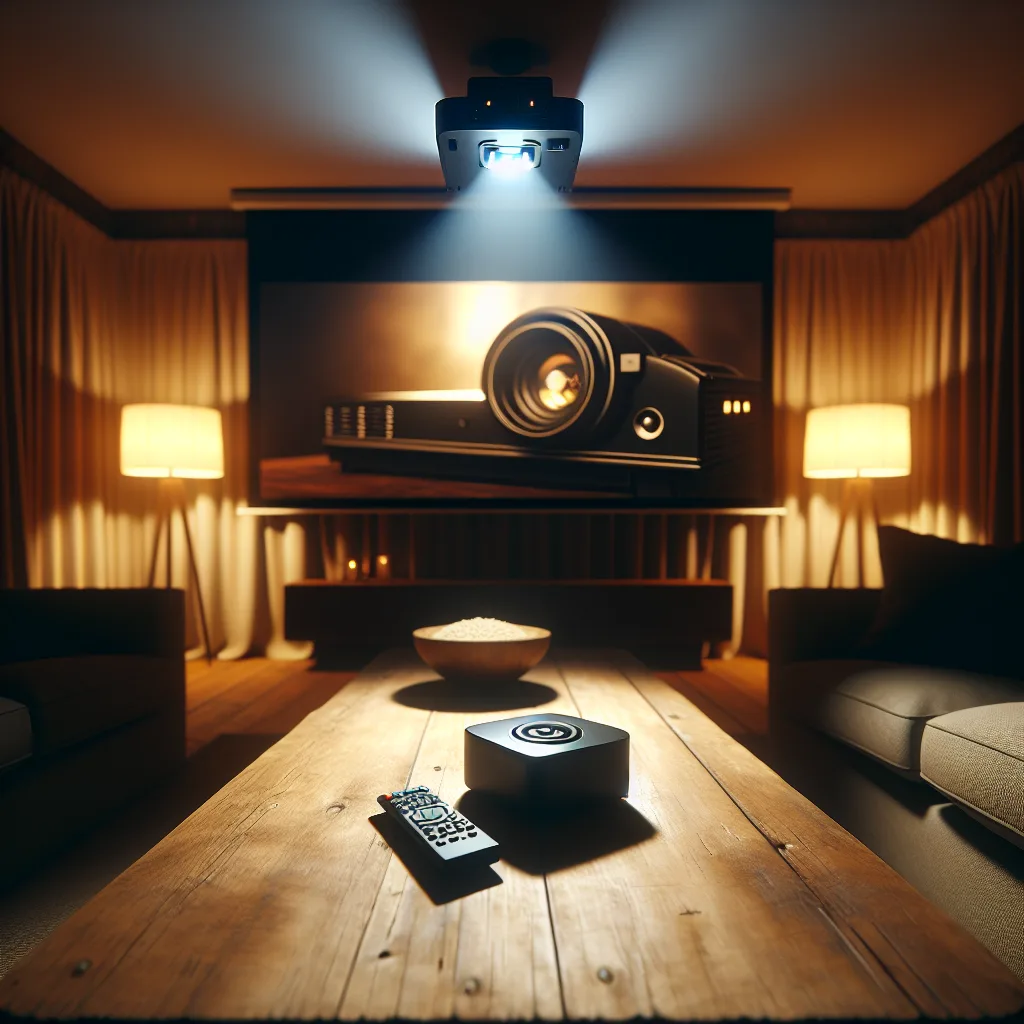Tired of juggling remotes for your projector, screen, and TV? Learn how to automate your home theater setup with a smart hub for a one-action movie night.
The Remote Shuffle. You Know the One.
It’s movie night. You’ve got your popcorn. You’ve picked a film. You flop onto the couch, ready to escape. But first, you have to perform the ritual.
I call it the remote shuffle.
First, you grab the tiny, slippery remote for the Android TV box. You point and click. The little white light turns on. Great.
Next, you fumble for the projector remote. It’s bigger, clunkier, and has about 47 buttons you’ve never touched. You aim it at the ceiling, press power, and wait for the whirring sound and the blindingly bright lamp to warm up.
Finally, you find the third remote—the one for the motorized screen. You hold down the ‘down’ button and watch as it slowly descends, hoping you remember to let go before it goes too far.
By the time the movie is actually ready to play, the mood is slightly… less magical.
This was my reality. My setup was simple enough: a Mi Box for streaming, an Epson projector, and a motorized screen. But the process felt needlessly complicated. My goal became beautifully simple: I wanted to go from zero to movie with a single action. No remote shuffle. No app fumbling. Just… on.
The Core of the Problem: Speaking Different Languages
The main issue wasn’t the devices themselves, but how they communicate.
- My Android TV and Projector both used Infrared (IR). This is the classic remote technology. It needs a direct line of sight to work and the signals are pretty standard.
- My motorized screen, however, used Radio Frequency (RF). RF is great because it doesn’t need a line of sight—you can point the remote anywhere—but it’s a completely different language from IR.
My Android TV remote couldn’t speak RF, and my screen remote couldn’t speak IR. They were like three people in a room who all needed to coordinate, but none of them spoke the same language. The dream of using just the little Mi Box remote to trigger everything seemed impossible.
Finding a Translator
My first thought was, “Can’t something just detect when my Android TV turns on?” If something knew the TV was on, it could surely tell the other devices to get ready.
This is a great idea in theory, but in practice, it’s tricky. Making one device’s power state a trigger for others usually requires a deeper, more complex smart home brain like Home Assistant. I respect the power of those systems, but I wasn’t looking for a new hobby; I was looking for a straightforward solution.
So I shifted my thinking. What if, instead of trying to make the devices talk to each other directly, I hired a translator?
This is where a little device called a smart hub comes in. You’ve probably heard of them. I ended up looking closely at the BroadLink RM4 Pro, which a friend recommended. Here’s what it does:
- It learns. You point your existing remotes at it (both IR and RF) and press the buttons. The hub records and saves those signals. Power on, power off, screen down, screen up—it learns them all.
- It blasts. Once it knows the commands, it can blast them out on your command. It has powerful IR and RF transmitters that can cover a whole room.
Suddenly, I had one device that could speak both IR and RF. The language barrier was gone.
Creating the “One-Action” Magic
The smart hub was the key. With all my remote commands learned and stored in the BroadLink app, I could create “scenes” or “routines.” This is where the magic happens.
I created two simple scenes:
1. Movie Night ON
* Action 1: Turn on the Projector (sends the IR signal).
* Action 2: Lower the Screen (sends the RF signal).
* Action 3: Turn on the Android TV (sends the IR signal).
2. Movie Night OFF
* Action 1: Turn off the Android TV (IR).
* Action 2: Retract the Screen (RF).
* Action 3: Turn off the Projector (IR).
I arranged the steps logically, with a few seconds of delay between each one to give the devices time to respond. Now, instead of juggling three remotes, I could just open one app and tap one button.
This was a huge improvement! But I still had to pull out my phone. We were close, but not quite at the finish line.
The Final Step: No Hands Needed
The last piece of the puzzle was connecting the smart hub app to my Google Assistant. Most of these hubs (including the BroadLink) have integrations with Alexa and Google Assistant.
Setting it up took about five minutes. Once linked, my “Movie Night ON” scene was now a voice command.
Now, this is my new reality:
I walk into the living room and say, “Hey Google, start movie night.”
The projector whirs to life. The screen silently lowers into position. The Android TV home screen appears. Everything is on, perfectly synced, and ready to go.
When the movie is over, I just say, “Hey Google, end movie night,” and the whole process reverses.
Is it the “one remote” solution I originally pictured? Not exactly. I didn’t get the Mi Box remote to trigger the sequence. But it’s a “one action” solution, which is what I really wanted. I traded three frustrating remotes for one simple voice command. The remote shuffle is officially a thing of the past. The magic is back.
